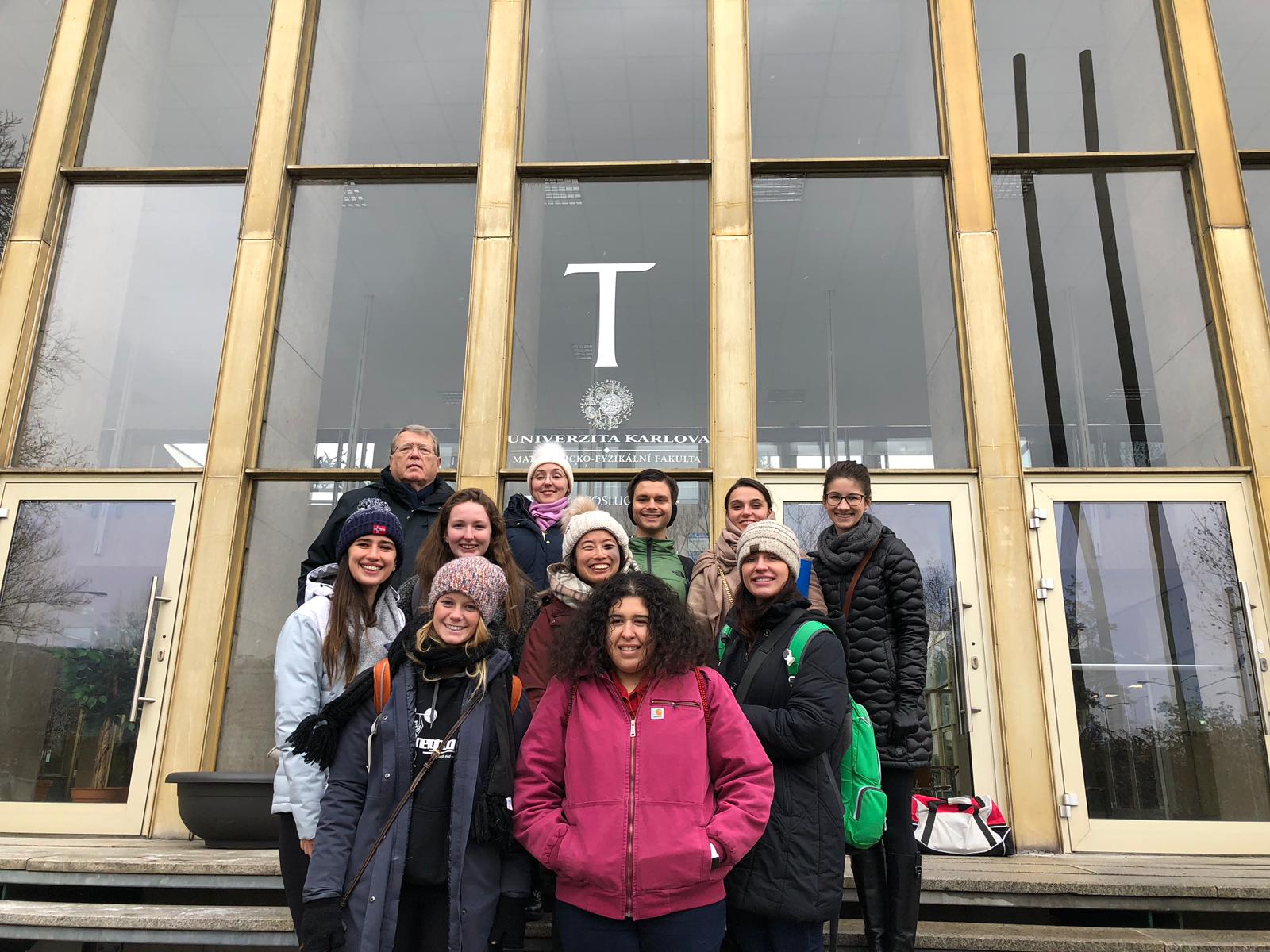PRAGUE NUCLEAR RESEARCH PRACTICUM

While at the Czech Technical University, we learned about important issues such as nuclear safeguards and security. We learned about the need to ensure safety and security of nuclear power plants from humans, the environment, and other outside factors as well as humans and the environment from potential nuclear power plant dangers. Additionally, we learned how to calculate power output of a nuclear reactor through the distribution of neutrons and how to identify what kinds of radioactive nucleotides are present in an unknown sample based on wavelengths and peaks provided through analyses of a computer database.
My favorite part of the experience was getting to work with nuclear reactors first hand and seeing these power plants at work and pieces of machinery being made. In my opinion, it is hard to truly try to put into perspective what I was taught in the classroom at MIIS as well as at the Czech Technical University, as someone who does not come from a technical background. I was also able to gain more knowledge such as why certain materials are used in building the machinery over others. In general, it was the chance to spend two weeks going more in depth on the “Intro to WMD” and “Science and Tech” classes that are required for the MANPTS program at MIIS.
We visited the Temelin Nuclear Power Plant in Temelin, Czech Republic. Here, we truly got to get a real life perspective of what we learned in the classroom. We learned how water is output to steam towers where it is cooled and condensed back into water droplets to continue the cycle. We saw first hand security and safeguard measures in practice and learned about how the nuclear fuel cycle is used at power plants. We also visited the Nuclear Radiation Protection Institution where we got to learn about how different types of equipment is used, such as whole body radiation counters, to determine the level of threat that a person or region has been exposed to in regards to radiation. We saw their mobile unit which includes 2 vans, a truck, a robot, drones, and a helicopter. All of which can be deployed if there is ever a nuclear emergency. Additionally, here, we saw how computer technology is used to measure the amounts of radiation in living areas throughout the country, an issue that is truly a priority to the NRPI.
Lastly, we saw Skoda, a company where they make machinery for nuclear power plants. We saw the amount of detail and consideration that goes into welding giant 106 ton pieces of machinery, most of which require three different seals and layers of protective coating such as copper to ensure that radiation will not leak out once it is stored. These pieces of machinery also require highly specific geometric designs to ensure that neutrons are not interacting with each other in significant ways that would produce too much heat or cause a chain reaction that could lead to an unintended explosion.
Knowledge like this is very useful for a career in the military. The military uses nuclear power for weapons, defense systems, and energy. This experience will allow one to enter into the military with some hands on experience operating nuclear reactors and seeing how the machinery is made. This experience, coupled with a policy background provided by MIIS, will can allow one to assist with policy reformation/implementation alongside of nuclear engineers in the military, ultimately aiding in developmental projects aimed at improving how the military uses its nuclear capabilities and resources for energy and in foreign relations.




You must be logged in to post a comment.